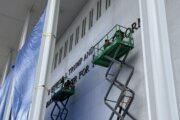Q: I know that iPhones are supposed to be waterproof, but how reliable is the protection?
A: Virtually every smartphone made by every manufacturer today has been designed to be water-resistant, but there are a lot of variables that could still cause damage to your phone if it gets wet.
Spills and splashes are generally no problem, but full immersion can become an issue, depending on the physical condition of your phone.
IP rating
As far as iPhones go, every model since the iPhone 7 has had some form of water-resistant capabilities, which are represented by an IP (Ingress Protection) rating.
Most iPhones are either IP67 or IP68, which are the two highest ratings available. The first number represents protection against foreign objects, such as dust, with six being the highest.
The second number represents protection against moisture, with eight being the highest available.
Both ratings technically allow your device to be immersed in water in depths of up to 1 meter for up to 30 minutes. IP68 devices can potentially go to deeper depths, depending on the manufacturer.
All bets are off!
One of the things that can compromise the water-resistance of your phone is something lots of us have done: drop the phone onto a hard surface.
Your phone may appear unscathed by a drop — other than some small scratches — but the seal created to keep moisture away from critical components inside can be compromised.
You won’t necessarily be able to see things like a small separation of the screen in one corner or even a small crack, but anything that compromises the seal will allow moisture into unwanted areas.
Liquid contact indicator (LCI)
Your iPhone has an easy way to see if it has been exposed to water via the LCI, which varies from model to model. The indicator is generally white or silver, but if it turns red, that’s an indication that the phone has been in contact with water.
Apple’s standard warranty does not cover water damage, so the LCI is the first thing they’ll check if you take it in for a repair. A guide showing where the LCI is on Apple devices can be found online.
AppleCare+ coverage
If you purchase the additional coverage for your iPhone, water damage is covered under Apple’s accidental damage protection, but it has a $99 deductible.
Salt water exposure
Despite the water protection rating, exposing your phone to salt water presents additional risks, especially if it gets immersed. When salt water evaporates, it leaves a salty residue behind, which can cause shorting or bad connections when charging your phone. It can also impact the speaker volume or tone.
If you plan on being around salt water with your phone, placing it in some type of waterproof pouch or case, especially if you’ve dropped it a couple of times, is highly recommended.
Let it dry
If your phone does get immersed in water, it’s important to let it dry out completely before trying to charge it — Apple recommends at least five hours. If you plug your charging cable into a wet connector, it can cause a short, so be patient.
Ken Colburn is founder and CEO of Data Doctors Computer Services. Ask any tech question on Facebook or Twitter.







